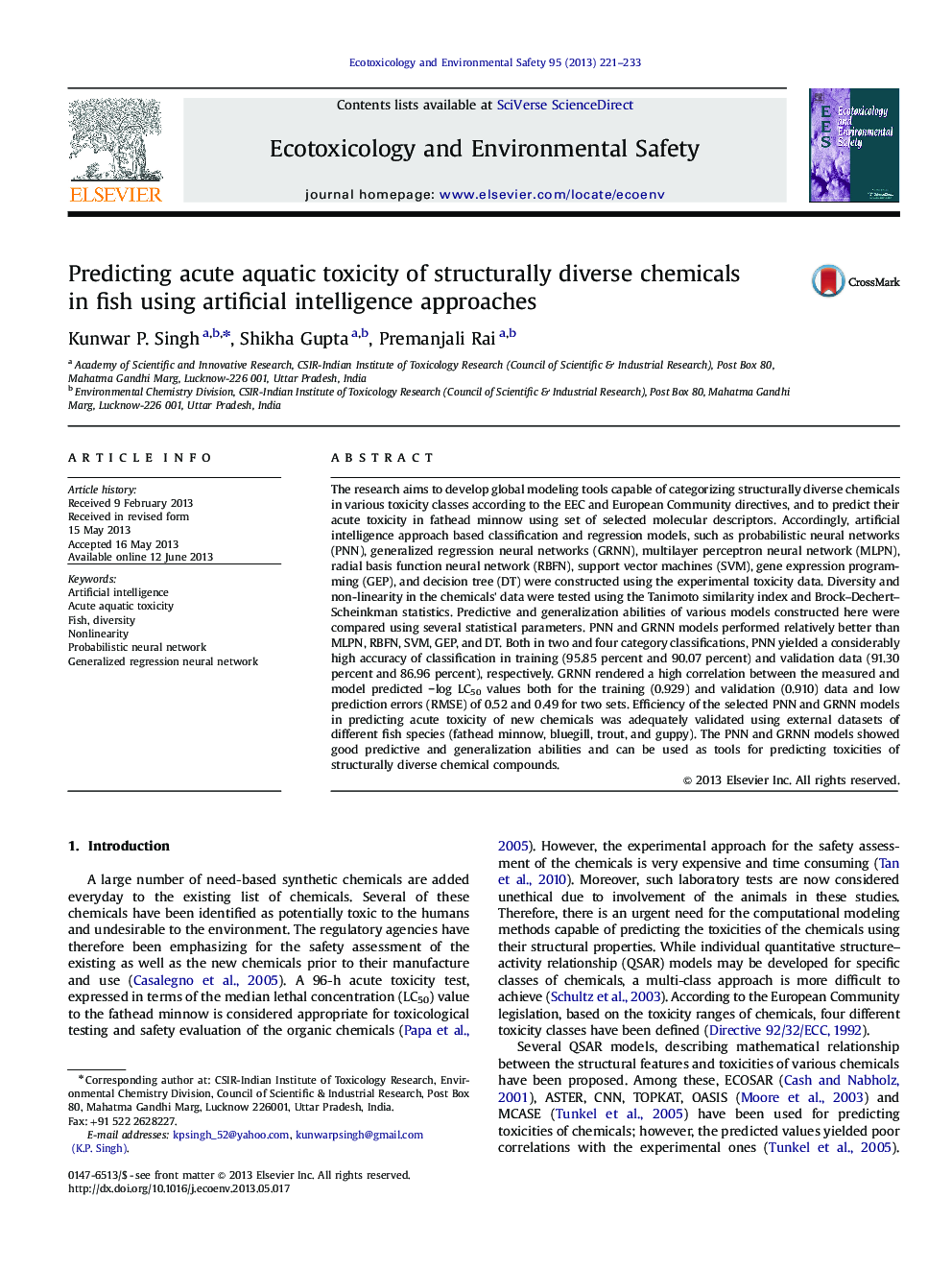| Article ID | Journal | Published Year | Pages | File Type |
|---|---|---|---|---|
| 4420361 | Ecotoxicology and Environmental Safety | 2013 | 13 Pages |
•Tanimoto and BDS test revealed diversity in chemicals and nonlinearity in data.•Interspecies (fish) toxicity models (PNN/GRNN) developed for diverse chemicals.•PNN/GRNN performed better; validated using toxicity data in different fish species.•PNN/GRNN can be used to predict toxicity of chemicals for regulatory purposes.
The research aims to develop global modeling tools capable of categorizing structurally diverse chemicals in various toxicity classes according to the EEC and European Community directives, and to predict their acute toxicity in fathead minnow using set of selected molecular descriptors. Accordingly, artificial intelligence approach based classification and regression models, such as probabilistic neural networks (PNN), generalized regression neural networks (GRNN), multilayer perceptron neural network (MLPN), radial basis function neural network (RBFN), support vector machines (SVM), gene expression programming (GEP), and decision tree (DT) were constructed using the experimental toxicity data. Diversity and non-linearity in the chemicals’ data were tested using the Tanimoto similarity index and Brock–Dechert–Scheinkman statistics. Predictive and generalization abilities of various models constructed here were compared using several statistical parameters. PNN and GRNN models performed relatively better than MLPN, RBFN, SVM, GEP, and DT. Both in two and four category classifications, PNN yielded a considerably high accuracy of classification in training (95.85 percent and 90.07 percent) and validation data (91.30 percent and 86.96 percent), respectively. GRNN rendered a high correlation between the measured and model predicted −log LC50 values both for the training (0.929) and validation (0.910) data and low prediction errors (RMSE) of 0.52 and 0.49 for two sets. Efficiency of the selected PNN and GRNN models in predicting acute toxicity of new chemicals was adequately validated using external datasets of different fish species (fathead minnow, bluegill, trout, and guppy). The PNN and GRNN models showed good predictive and generalization abilities and can be used as tools for predicting toxicities of structurally diverse chemical compounds.
Graphical abstractFigure(a) Misclassification rates (MR) and classification accuracies yielded by different models in training and validation data show superiority of PNN model in classification of chemicals as toxic and non-toxic (fathead minnow) over other artificial intelligence methods.Figure (b) shows generalization and predictive abilities of the GRNN model to predict the acute aquatic toxicity of diverse chemicals in fathead minnow.Figure optionsDownload full-size imageDownload as PowerPoint slide
